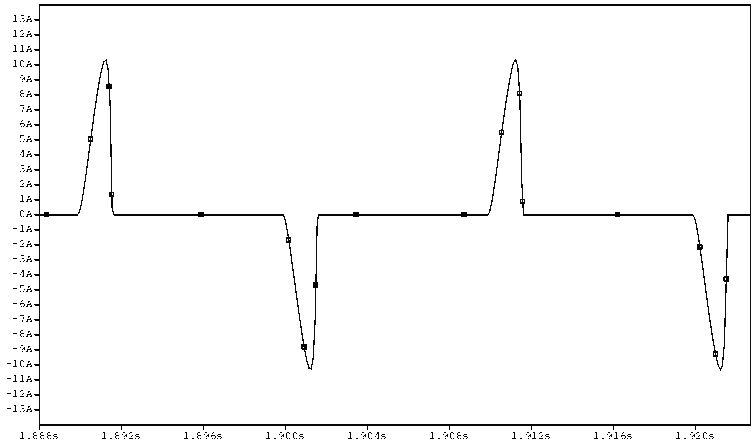Can a power supply unit be large enough?
It is an old experience of all developers that power supplies have a considerable influence on the sound of all components of high-end systems, be it preamplifiers with low power consumption or large power amplifiers. And the experience is: a lot helps a lot. The bigger the transformer, the bigger the electrolytic capacitors (and this is to be taken literally), the better the sound.
Here the attempt to give a possible explanation in few words.
A power supply consists basically of the source (the socket :-)), a transformer, the rectifier and the capacitor.

Why can't a power supply unit be big enough?
The currents flowing in the branches are pulse-shaped, because the capacitor is only recharged when the (almost sinusoidal) output voltage of the transformer is higher than the voltage of the capacitor. During the charging process the diodes conduct naturally and the amplifier is coupled to the mains. During the time when no current flows through the diodes, the amplifier is decoupled from the mains, i.e. as if it were fed by an accumulator (here the electrolytic capacitor). The ideal power supply with an infinitely large transformer and an infinitely large electrolytic capacitor would charge the electrolytic capacitor only with a single infinitely high and infinitely short current pulse and then feed the amplifier from the capacitor for an infinitely long time. This is battery operation and represents the ideal case of supplying all high-end components. All components would be completely decoupled from each other. And we want to come as close to this ideal as possible.
This explanation is highly simplified and therefore, like every simple explanation, wrong in detail. It ignores the influence of leakage inductance and thus switching resonances and their influence on the current switching times. Nor do I want to consider the spectrum of current pulses modulated with the load current and its influence on other components. In the end, however, this simplified explanation leads to the goal. And only that shall count here.

In reality, the time in which charge current flows is unfortunately not infinitely short, but finally long and repeats itself with a frequency of 100Hz. The reason for this is the internal resistance of the charging circuit, consisting of the resistance of the 230V mains R net, the transformer (Rprim and Rsec), the diodes and the electrolytic capacitor (ESR). In the schematic I have entered the typical values of a 10m long 1,5qmm power cable (from fuse box), a 320VA toroidal transformer and a very good electrolytic capacitor.

The shares of the individual resistors can be better evaluated if they are all transformed into the secondary circuit.

In the equivalent circuit diagram on the secondary side you can see quite clearly that the power line has (almost) no influence, but in this case the transformer with its internal resistance has the essential part.
The idea to use a big transformer with more than 100VA and big electrolytic capacitors for a preamplifier seems to be a good one.
And if you know that the ESR of an electrolytic capacitor is almost directly proportional to its volume (and hardly depends on the capacitance and the dielectric strength), then you know that only ground helps here.
Is there now a technically reasonable limit to "megalomania"?
I think so. This results from the typical load current and the dynamic internal resistance of the rectifier diodes. This is in the range (depending on current load) from 5mR to 30mR (per diode) for typical high power diodes (e.g. MBR2045,MBR3045) and in my opinion it makes little sense to make the internal resistance of the transformer much lower. This results in toroidal transformers of 1-2 kVA after all. As a rule of thumb for the Siebelkos you can take 10mF / 1Aeff load current as maximum reasonable value (100W/4R = 50mF, 200W/4R = 70mF ...). This is quite impressive and a real challenge for the purse. But as always in the High End, the last bit of sound costs the last shirt if you want it. A good compromise is a matter of opinion, but a transformer with 3-5 times the nominal output power of the amplifier seems to me quite opulent.


